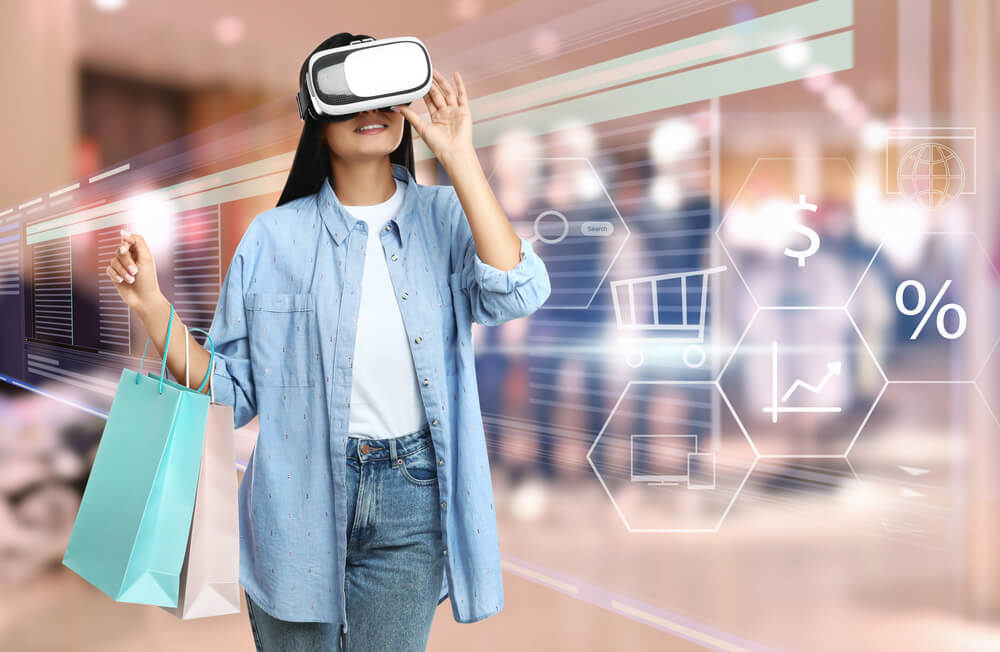Our website contains links to partner sites. If you click from our site to the partner's site and purchase their services there, we will receive a commission for mediation (Find out more information). This form of cooperation does not affect the objectivity of our reviews. With each purchase made through links from our site, you support our editorial office so that we can create quality and useful content in the future. Thank you.
Important notice All our articles are written by real people. They are not artificial texts from a machine.
Future of AR and VR in eCommerce

The origins of virtual reality (VR) and augmented reality (AR) technologies may be dated directly to 1838, when Charles Wheatstone invented the stereoscope, which overlaid a picture over each of the viewfinders, resulting in a scattered 3D image. Edwin Link’s flight simulator, Ivan Sutherland’s “Sword of Damocles” VR headgear, and several more innovations have all added to the cutting-edge innovation we know today. Of course, the advent of virtual reality (VR) and augmented reality (AR) will make today’s technology appear as rudimentary as the early experiments.
More than a decade back, the first true smartphone reached the market, transforming displays into an integral component of our daily life. As a result, technology has altered how we connect, work, explore, and shop. We believe AR and VR will have the same impact on our lives.
Pros of AR and VR
According to Valuates, the VR and AR industry should increase at a CAGR of 63.3 % between 2018 and 2025. It will grow at a CAGR of $571 billion by 2025. This expansion will be driven mostly by the continuous usage of smart devices, a rise in Internet access, and a rise in mobile computing. AR and VR technology has advanced significantly in recent years, and is no longer restricted to games or the entertainment industry in general, with VR applications broadening to several other areas and businesses such as retail, e-commerce, education, tourist industry, engineering and manufacturing, coaching, health services e.t.c.
This may appear to be a costly technology to employ, but it has the potential to cut expenses, enhance operational performance, and generate a greater return on investment (ROI) for most initiatives.
Here are some advantages of AR and VR in businesses:
1. User-interactive environments
Leading businesses develop VR marketing experiences for a variety of reasons, including interaction and creativity. Considering the benefits of virtual reality in business, organisations will be at the technical forefront, attracting clients’ interest.
Likewise, AR enables users to add a personalized experience to published or online content by “augmenting” it via the use of customized smartphone applications and markers that can provide additional information.

2. ‘Try Before You Buy’ Idea
The key benefits of VR and AR are that they increase productivity through individualized content and innovative business models.
While more E-commerce/retail enterprises integrate VR & AR technology into the User experience, the notion of ‘try-before-you-buy’ increases dramatically.
3. Introduce well-known products to new viewers
The good quality of VR/AR material elevates each proposal to a new level.
It’s a fun method to showcase items and/or services while also creating a more engaging purchasing experience. It enables users to consume material in a more holistic setting, resulting in an emotional attachment with them.
4. It produces extensive analytics to help users analyze their behaviour
Virtual and augmented reality systems use online and social media metrics.
This adds genuine value to our understanding of consumers’ interests and activity. Once a thorough insight is obtained through metrics, the possibilities are limitless.
Trends of AR and VR in 2022: Transforming the virtual industries
During the past few years, technology has advanced at a breakneck rate, with a slew of new breakthroughs hitting the market. While most of these have long passed without much of an influence, a few have remained successful.
Numerous trends have appeared recently that are influencing both AR and VR.
As a whole, the impacts are likely to become even more visible and influential during 2022 and beyond.
Here is a list of trends in 2022:
The Effect on Training and Teaching
Both technologies have obvious advantages for education and training, as seen by their use in institutions and training programmes. People studying architecture, for example, or any dangerous or difficult field, can learn without the hazards that are traditionally associated with them.
Through virtual reality, aspiring professionals in these fields would be able to coach in a virtual environment that provides a high level of precision while minimizing the consequences of committing mistakes.
Entertainment for Consumers
Although it’s been a tendency for most of the development of AR and VR, it appears to be improving dramatically in the future years. That’s because, for the past few years, both were quite narrow fields, with many creators unable to produce a commercially successful software or device.
Nevertheless, with recent advancements in both software and hardware, this appears to have changed. As an outcome, these technologies are becoming considerably more affordable for customer entertainment, implying that they will achieve far greater success in the future months.
Collaborative & Social
Facebook’s recent acquisition of Oculus has emphasised the potential for tech to become quite sociable in the future. This is something which many other firms have noticed and have begun to target.
As a consequence, virtual teleconferences, among other things, are on their way to becoming far more popular and collaborative.
Tourism and travel
The influence of VR on the tourism industry is growing in tandem with the adoption of devices. This is due to the fact that many people may now explore a place without sacrificing comfort from the comfort of their home.
Conclusion
Despite being a new technology, the development of AR and VR has indeed been astounding, as evidenced by a number of startling figures. Most of these developments, like the ones listed above, exhibit no indications of abating or diminishing any time soon.









